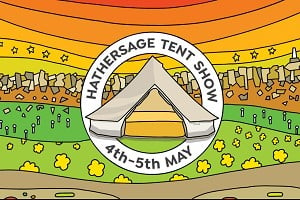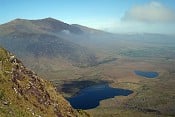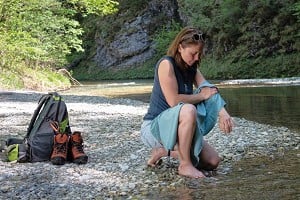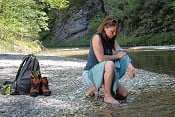
Heard and saw my first Chiffchaff this morning.
Long tailed tits, blackbirds and sparrows collecting nesting materials. Gulls pairing up and avocets displaying. There’s a field close to me where curlews congregate at this time of year, having a feed before heading north. Saw nine on my mornings dog walk.
Signs of spring anyone ?
> Signs of spring anyone ?
You can hardly see the water in our pond for frogs and I'm waking up to bird song.
Love this time of the year
Loving your work!!
Nice. And I love this time of year. I try and cram as much as possible into spring and early summer, before the heat and rain arrives
Hares are very active, dashing away or hunkering down in the grass as we pass. Blackthorn blossom scents the air, in the sunshine. Mrs Blackbird is ruffling her feathers flirtatiously for her mate, on the shed roof. He faces her, makes 'angry face' with beak agape, and mounts her.
First chiffchaff for me
I've seen a Sparrowhawk half a dozen times this spring, first time since we moved in ages ago.
Internally displaced migrant I assume, and a very welcome addition to the area.
Great stuff. Never get bored of Sparrowhawks. Same with Snipe, todays stonker.
There seems to be an upsurge in House Sparrows in my immediate area. That might not be very exciting for many people but it's a new development here. We have a pair building a nest in our hawthorn tree.
Chiffchaff - ha ha never did learn how to easily tell the difference between them and Willow Warblers last year! Must try harder this year.
Saw a pair of Long tailed Tits nest building in brambles hanging down a wall. Interesting to watch them gathering moss from the dyke and returning to the nest.
I have a pair of Blue Tits and pair of Great Tits that are regular visitors to the garden feeders every day now. They must be nesting nearby. The BTs get chased away when the GTs are about.
Heard from others that Wheatears and Swallows are back in Fife. Plenty of birds singing loudly; even Dunnocks getting high up on bushes to sing.
Fab photos of the Snipe.
The first osprey at Manton Bay on Rutland Water returned a couple of days ago. Looking forward to seeing the Loch Arkaig ones.
Dave
A magpie flying over the motorway with a stick in its beak.
In probably non related news I was walking round the Helix park in Falkirk (you might know this?) a few days ago and there were 5 roe deer moseying around. The closest was maybe 20 feet from the path, they seemed unconcerned by the passers by.
But the most unusual wildlife experience I've had recently was a fox climbing over a hedge in Clermiston. Quite a thing to witness, it struggled a bit. ☺
First golden plover on the hill around Dundonnell last week
I heard woodpeckers in the woods this morning for only the second time this year. There was some X-rated bird on bird action going on down on the river - a couple of moorhens clearly feeling a bit frisky (the mallards have been at it a while already).
Also, hardly migratory, but a welcome return nonetheless - I turned a corner and for the first time this year encountered a cloud of delicious aroma from the wild garlic. (Still a long way off flowering, the leaves have been visible a while but this morning was the first time I've properly smelled it.)
Lamentably no frog related (or any other) activity in our pond. I'm wondering if that's because I topped it up with tap water during last summer's dry spell..? The water's clear and I'm guessing well oxygenated with a submersible pump/waterfall I've kept going all winter.
Just in the morning and goldcrests as well - but fieldfares still around
I think you beat me. And I’ve seen fieldfare and redwings today.
The tap water would be fully ‘naturalised’ by now.
A Ladybird just landed on my windscreen. A welcome seasonal visitors 😊
Ospreys back at the Loch of the Lowes and Golden Plovers on Ben Chonzie yesterday.
Or possibly an invasive species that presents a bit of a problem for the natives.. did you count the spots?
https://www.wildlifetrusts.org/wildlife-explorer/invertebrates/beetles/harl...
Edinburgh is heaving with foxes. They wander around in the streets in the middle of the day. I've had them walk past 15 feet away from me, give me a glance and carry on. I've spent most of my free time in the countryside over the last 55 years and I've seen more foxes in Edinburgh over the last year than in the rest of my life!
Have up feeding birds at mine, all I get is sparrows and a few wood pigeons.
the black redstart has just returned, here in SW France; from Spain I believe
I'm in suburban N Manchester, I occasionally see a fox wandering down my road. They're accustomed to humans and just know that we're not a threat, so they virtually ignore us, which means much closer views than you'd get in the countryside.
Have you seen them ? I've heard redstarts in the woods & fields just outside the village but I've yet to actually see one (Hauts-Alpes). Otherwise I've not seen any migrants but lots of the residents busy nesting.
Yes ! it's been to the bird table. I believe the redstart (not 'black') migrates from further afield
In the warmer months they are as common as robins; interestingly while they are often around human habitation , also around 2000m granite territory - have you noted them up high ?
For anyone interested in the return of ospreys - https://www.ukospreyinformation.com/blog/2023-countdown.
Interesting that apart from Rutland Water the other two returns are in Scotland.
Anyone know of others?
Dave
I heard (and saw) lapwings for the first time this year this afternoon, and there were lots of skylarks singing on the wing too. Lovely.
> Chiffchaff - ha ha never did learn how to easily tell the difference between them and Willow Warblers last year! Must try harder this year.
You tell the difference by the songs - very obvious - although there are some small differences in appearance (CC dark legs, WW paler legs, WW has slightly longer eyestripe, overall WW tends to be slightly yellower), they're not easy to see, not always definitive and the within species variation can be as large as the difference. If you're taking photos then it'll be easier to identify a silent bird from them than whilst you're looking at it.
My first Chiffchaff this year was last Thursday in the middle of Salford!!! Most lunchtimes I get my eyes off the screen by walking along a little stretch of the River Irwell for half an hour - a mile from the Manchester city centre - river looks a mess but it's teeming with fish; Kingfishers, Goosanders - loads - I've seen 60 in one place before now, and Goldeneye in the winter - up to 30 at a time, Little Egret on a couple of occasions.
A couple of interesting Chiffchaff/Willow Warbler migration facts:
- CCs arrive a bit earlier than WWs - they winter further north so don't have so far to fly.
- WWs have slightly bigger wings than CCs (apparently only measurable in the hand) - they have to fly further so have developed bigger wings.
Thanks for that; appreciate the tips and facts. (Every time I see a P Sandpiper I remember your tip about beak colour!).
I’m going to check my photos later, but part of my difficulty is it was very early on in my learning curve and I hadn’t got the small pointers tips to look out for and store away. Also, besides, my photography was poor back then which didn’t help IDing later at the screen.
According to my go to photos folders (a small sample of my archived ones) it suggests I saw Chiffchaffs only three times; twice April 22, and one solitarily bird in June. I really need to see some birds (like Chiffchaff/WW) regularly to imprint the differences. Hopefully this year will be better though I’ve not seen or heard any of either species this year so far.
Always hopeful of see Kingfishers and getting an ok photo. Got some close up Goosander (m) photos just last week. Didn’t realise that they have an iridescent greenish tinge in head colour in certain lights. Every outing is a learning day with birds.
I only realised last year that male goosanders lose the green head by June/July, then looking much like the females until they get green heads back again very late in the year.
Small goosanderlings (much better than goosander ducklings) are very cute.
Here's a poor smartphone photo from last May (I might have posted this before), there's about 50 in shot, another few were outside the photo.
> A couple of interesting Chiffchaff/Willow Warbler migration facts
When resident in the Kingdom it was apparent to me that these two share identical habitat; here in SW France I am perplexed at the 'missing' WW, while the CC is fairly common. Any ideas ?
I'm not just perplexed but sadder too - love the WW song
> these two share identical habitat
Not sure about this, definitely large cross-over but I don't think identical - maybe you're in a CC only habitat - no other ideas I'm afraid.
Is there a French equivalent of the BTO with its distribution maps, that might help.
Hearing both CC & WW is a definite joyful "in the middle of spring, summer's coming" feeling.
We've had large flocks of lapwing around the East Lothian coast all winter, and there was skylark singing above the dunes near North Berwick on 24th Feb this year, as well as female skylarks, er, larking about on the beach.
In case there might be any confusion with the the thread title, neither species is a migrant arrival in this part of the UK. Skylarks do abandon their breeding areas further north in Scotland over the winter and move to warmer climes - like the balmy winter shores of East Lothian, ha ha - and lapwings move to lower ground, hence the concentrations around the estuaries.
According to the distribution maps in my old Hamlyn guide both birds should be present in the season all across france. However according to this source the pouillot fitis - WW - (now ? ) has a preference to stay N of mid france
https://www.ornithomedia.com/pratique/identification/distinguer-pouillots-f...
Good grief that is a detailed webpage (even without translating I can see the overall gist of it) presumably similar for lots of other species, I'll try and avoid that "rabbit hole" until I need it 😁
Hamlyn guide, is that the old paperback Birds of Britain and Europe - didn't know anyone else still had one. I still use my tatty mid-70's copy.
> In case there might be any confusion with the the thread title..
I'm no bird spotter but yes, ta - even I was aware that they're not migratory as such. Rightly or wrongly though, seeing and hearing lapwings here in the Peak District feels very much to me like a cheery uppy sign of spring.
And I will always associate the song of skylarks with summer - but I suspect that's just nostalgia for apparently endless days mooching about in school summer holidays when it was a much more common sound than it is now.
> Hamlyn guide, is that the old paperback Birds of Britain and Europe - didn't know anyone else still had one. I still use my tatty mid-70's copy.
My copy has written reference to the year of purchase 1970, the same - year of publication. It's the 1st book I ever chose independently, while away at boarding school
I've got the 1979 first reprint of the revised 1978 edition. I definitely had the original 1970 edition, an early 1970s reprint, at one time: it was a birthday present the year I was laid up in bed with jaundice for two weeks and I read it from cover to cover. I've no idea when or how that copy left my possession, or how I acquired the later edition.
I now tend to rely on the Collins Bird Guide (2nd edition) as my first point of reference, on the recommendation of my contacts at the BTO.
That’s a great sight (gooseanders). What’s a bit weird is: I’m fully on board with how polluted our rivers have become, but there’s ‘industrial’ rivers that are now thriving. The other Friday saw a dipper on the river Douglas in Wigan, next to Tescos. I was stopped at the lights and glanced over and saw it.
> What’s a bit weird is: I’m fully on board with how polluted our rivers have become, but there’s ‘industrial’ rivers that are now thriving.
My theory is as follows...
- X years ago, rivers polluted by rubbish and industrial/chemical pollutants
- Now, rivers only polluted by rubbish
But because there's so much less industrial/chemical pollution, the actual water quality is good enough to support loads of life, even though it often looks like a mess.
Aye. And how’s about the lack of farming pollution??
Lots of chiff chaffs and my 1st singing bullfinch for a large number of years...
> Heard from others that Wheatears and Swallows are back in Fife.
That surprises me - 10 days ago ! I have only just seen house martins over our village in SW France.
Just an individual of each species I understand were in Fife by 18th - a male Northern Wheatear in NE Fife, and a Swallow in West Fife. Sorry shouldn’t have used “s” indicating plural as that was Scotland wide since a few sightings had been outwith Fife also at the time.
I do remember though RSPB Vane Farm, Kinross recording a single Swallow about roughly the same time in 2022. It was in the area for a few days of really poor weather and after a couple of days from verified sighting it disappeared. They did’t know if it managed to find shelter, moved to a warmer area or succumbed to the weather.
Multiple chiffchaffs at Pencuik House today, both heard & seen.
As for native species: wrens singing all over the place, and a flock of goldcrests making a remarkable racket high up and thus more or less invisible in the conifer woodland. Always good to know the wee ones made it through the winter OK.
it is always remarkable what a volume of sound the wee jenny wren makes (NB. weight 7 - 12g) ; have you ever observed how, while singing they slowly wave their tail in a micro-orbit ?
Ironic to remember that wrens used to get hunted in (medieval ? ) times past - did they even succeed ?
> it is always remarkable what a volume of sound the wee jenny wren makes (NB. weight 7 - 12g) ; have you ever observed how, while singing they slowly wave their tail in a micro-orbit ?
> Ironic to remember that wrens used to get hunted in (medieval ? ) times past - did they even succeed ?
Nope: it’s the UKs most common breeding bird, living in almost every habitat, would be nigh on impossible to kill them all. iirc, they have a directional song - much louder in one direction. They are amazing.
On another note, few days ago noticed my local nuthatch visiting its usual nest hole. It’s about ten foot up a tree, but the tree is three feet down a bank, giving perfect views.
Mine was on me when I had a broken ink bottle incident. Still got it in all its Rorschachian glory.
Steeleye Span's second album - Please to See the King - has a song about this. A wren was caught and killed to symbolise the end of winter, taken from house to house in the village accompanied by singing the song. Not sure how you catch a wren unless it is cuddled up in a crevice, semi-hibernating...
The first osprey at Loch Arkaig returned yesterday and the excellent cameras are now on.
Saw a small group of geese flying north at Gairloch this morning - too high to identify.
Also saw a wheatear at Mellon Udrigle last Monday.
Dave
Noticed our first frogspawn at the beginning of last week and a heron signalled that there were newts in residence. Then, on Thursday night, the warm, wet weather kicked off a big amphibian dash with toads and newts arriving. More frogspawn and much toad squeaking over the weekend.
I put a chicken wire frame over the main frog spawning area to keep herons and ducks away (the frogs always use the shallow end and have an agreement with the toads who always use the deep end). There was a heavy frost forecast for last night and so I put some sacking over it to avoid to top layer of spawn being killed. There was ice on the top this morning, so glad I did.
> I put a chicken wire frame over the main frog spawning area to keep herons and ducks away
Do you have grounds for concern of a pre-existing imbalance in the food chain - the predator pyramid has become top heavy ??
> Do you have grounds for concern of a pre-existing imbalance in the food chain - the predator pyramid has become top heavy ??
I made the pond to provide a breeding place primarily for amphibians and dragonflies, not for nuisance wildfowl like mallards and Canada geese.
Frogs have declined by more than 20% in the last 10 years and toads by two-thirds in 30 years. Mallards, not so much.
https://www.discoverwildlife.com/animal-facts/amphibians/toads-are-declinin...
Most of the tadpoles will indeed be predated but I'd prefer that to be by newts, dragonfly and Dytiscus larvae and, with luck, grass snakes.
Nice project ! Grass snakes (couleuvres ) are fairly common over here, I admonish my wife to protect them but she just wants be rid (is this a programmed Eve hand-down ?). The only (but unlikely) threat from a snake here in SW France comes from the viper which by relative smallness creates little fear at a glance.
> Frogs have declined by more than 20% in the last 10 years and toads by two-thirds in 30 years.
Which likely relates to poisoning of molluscs and insects in the lower pyramid tier - do you manage to avoid pesticides & slug pellets in your garden / land ?
No need for slug pellets with this newly-awakened wee spikey fellow patrolling each night: https://live.staticflickr.com/65535/52792515166_6a4a01aa57_c.jpg That's in addition to the multitude of frogs who filled the pond with spawn a couple of weeks back.
> The first osprey at Loch Arkaig returned yesterday and the excellent cameras are now on.
You might be interested to watch the Loch of the Lowes camera. We have a first osprey egg of the season this morning.
https://scottishwildlifetrust.org.uk/things-to-do/watch-wildlife-online/loc...
> You might be interested to watch the Loch of the Lowes camera. We have a first osprey egg of the season this morning.
Good to hear that. I do drop into the Loch of Lowes camera from time to time and also the Manton Bay one on Rutland Water where the nest had, before the osprey arrived, been visited by Egyptian Geese and a Peregrine.
Dave













